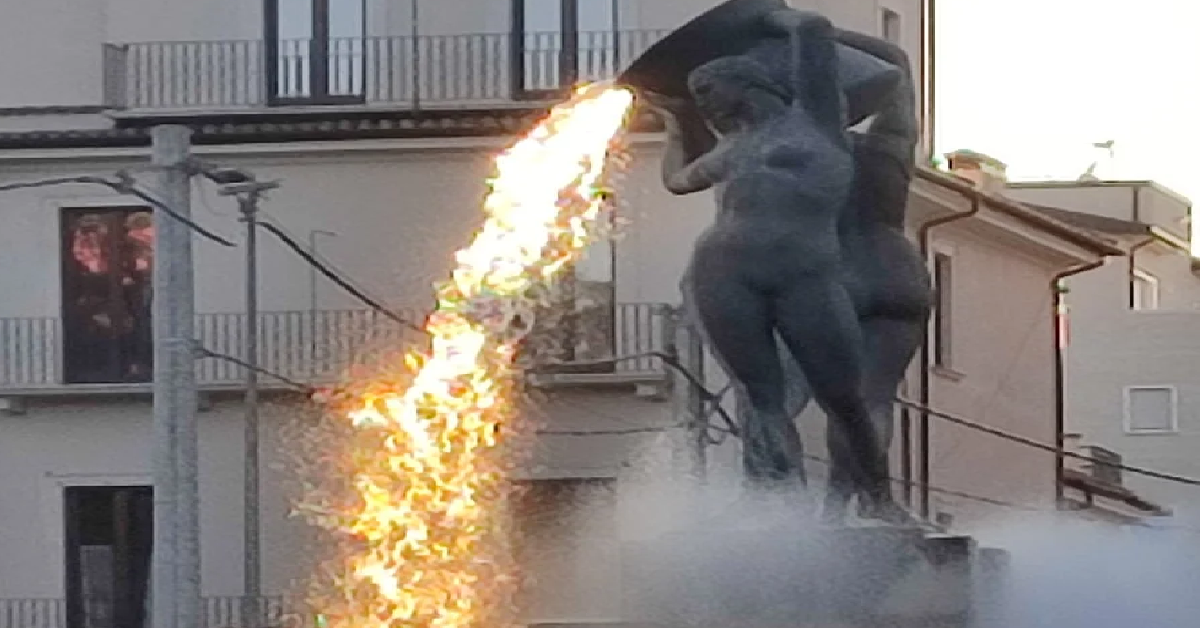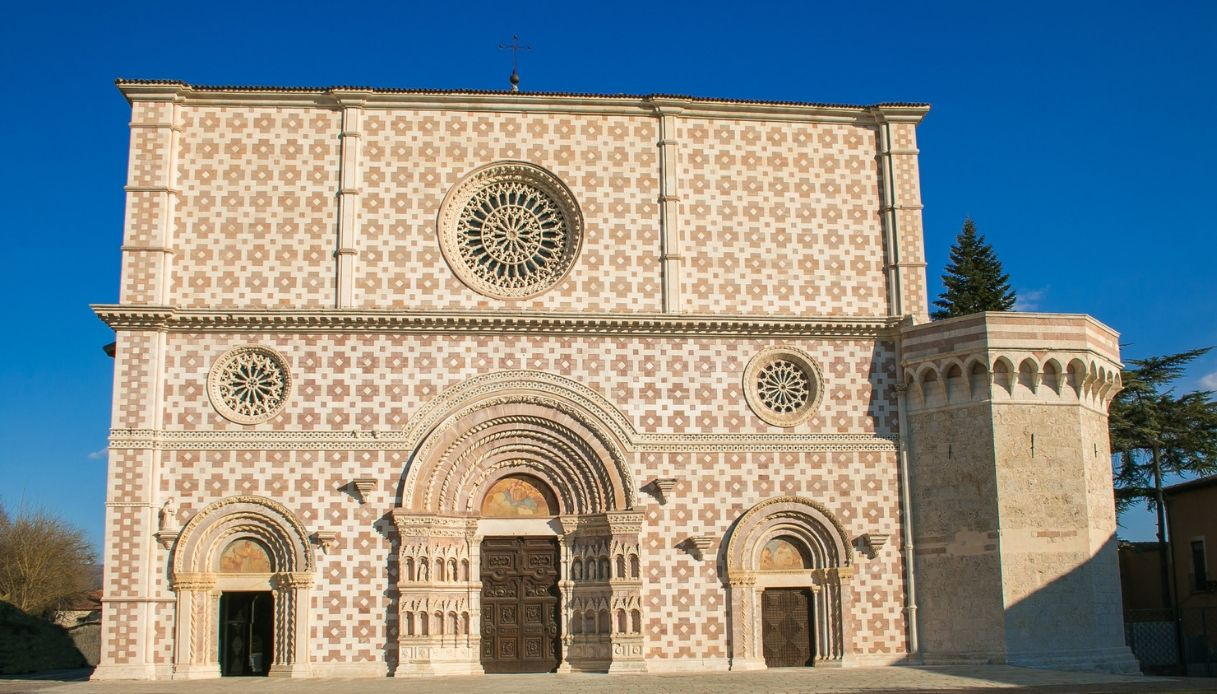LAquila, Italy, Fontana Luminosa
Blog Sections
Discovering L’Aquila, Italy: The Charm of Fontana Luminosa
Explore the timeless beauty of L’Aquila, a hidden gem nestled in the Abruzzo region of Italy, where history, art, and culture converge. A central highlight of this city is the Fontana Luminosa, a striking fountain that symbolizes L’Aquila’s resilience and elegance.
L’Aquila is a historic city known for its captivating blend of medieval architecture, vibrant cultural scene, and stunning natural surroundings. Located in the heart of Italy’s Abruzzo region, it is often overlooked by travelers in favor of more famous Italian destinations. However, L’Aquila’s charm lies in its rich history, its artistic treasures, and its people’s indomitable spirit.
One of the city’s most iconic landmarks is Fontana Luminosa, a beautiful and symbolic fountain located near the heart of L’Aquila. Surrounded by breathtaking views of the Apennine mountains, Fontana Luminosa offers visitors a serene and elegant introduction to the city. In this post, we will take you on a journey through L’Aquila and explore the significance of Fontana Luminosa, its history, and the best things to see and do in the area.
The Heart of L’Aquila: Fontana Luminosa
Fontana Luminosa, or the “Luminous Fountain,” is one of L’Aquila’s most beloved landmarks. Situated in a central square just a short walk from the historic center, this stunning fountain serves as a gateway to the city’s cultural heart. The fountain, designed by the sculptor Nicola D’Antino, was inaugurated in 1934, and it has since become a symbol of L’Aquila’s beauty and resilience.
The fountain consists of a central basin, which is illuminated at night, giving the water a magical, glowing effect. At the center of the fountain are two bronze statues of women, representing the power and beauty of the region’s mountains and rivers. The illuminated water cascading from the fountain creates a mesmerizing sight, especially in the evening when the square is lit up.
For visitors, Fontana Luminosa is more than just a fountain—it’s a reflection of L’Aquila’s spirit. After the devastating earthquake in 2009, the city has been slowly rebuilding, and the fountain stands as a reminder of the city’s enduring strength and beauty.
Travel Tip: Visit the fountain in the evening to fully appreciate the glowing lights that give Fontana Luminosa its name. The surrounding square is a great spot for an evening stroll.

A Brief History of L’Aquila
L’Aquila’s history dates back to the 13th century when it was founded by Frederick II, Holy Roman Emperor. The city was strategically built on a plateau at the foot of the Gran Sasso d’Italia, the highest peak in the Apennines. L’Aquila soon became a thriving cultural and commercial hub, known for its medieval architecture, churches, and universities.
Throughout its history, L’Aquila has faced numerous challenges, including earthquakes, wars, and political changes. However, the city has always demonstrated remarkable resilience, rebuilding and preserving its rich heritage. The 2009 earthquake caused significant damage to L’Aquila’s historic center, but the ongoing restoration efforts have brought new life to the city.
Fontana Luminosa, located at the intersection of L’Aquila’s modern and historic areas, perfectly encapsulates the city’s ability to blend its past with its future. As the city continues to recover, its landmarks like the fountain are beacons of hope and renewal.
Historical Insight: L’Aquila was part of the Kingdom of Naples, and its architectural style reflects a mix of influences from medieval, Renaissance, and Baroque periods.

Exploring L’Aquila’s Historic Center
After visiting Fontana Luminosa, take the time to explore L’Aquila’s historic center, where you’ll find a treasure trove of architectural and cultural landmarks. The heart of the city is Piazza del Duomo, a large, bustling square surrounded by cafes, shops, and historic buildings. Here, you can visit the Basilica di San Bernardino and the Church of Santa Maria di Collemaggio, both of which are prime examples of L’Aquila’s medieval and Baroque architecture.
As you wander through the narrow streets, you’ll come across beautifully restored buildings, charming piazzas, and remnants of L’Aquila’s rich history. The Forte Spagnolo, a Spanish fortress built in the 16th century, offers panoramic views of the city and the surrounding mountains. This imposing structure now houses the National Museum of Abruzzo, where you can learn more about the region’s history and culture.
The Palazzo Margherita, which served as the city hall, is another must-see. Despite being heavily damaged in the 2009 earthquake, restoration work has brought back its original splendor.
Travel Tip: L’Aquila’s historic center is best explored on foot, so wear comfortable shoes and take your time to soak in the city’s atmosphere. Guided walking tours are available for a deeper dive into the city’s history.

The Natural Beauty of Gran Sasso
One of the greatest draws of L’Aquila is its proximity to the Gran Sasso e Monti della Laga National Park, one of Italy’s largest and most diverse national parks. Just a short drive from the city, Gran Sasso is home to the towering Gran Sasso d’Italia, the highest mountain in the Apennines.
For nature lovers and outdoor enthusiasts, this park offers endless opportunities for adventure. Hiking trails wind through picturesque valleys, forests, and high-altitude meadows, while more challenging routes lead to the summit of Gran Sasso, rewarding hikers with breathtaking views of the surrounding landscape.
During the winter months, the park becomes a popular destination for skiing and snowboarding, with several ski resorts offering slopes for all levels. In the summer, activities such as horseback riding, mountain biking, and climbing are popular.
Nature Tip: Visit in the spring or autumn for the most pleasant weather and to experience the park’s natural beauty at its finest. The wildflowers in spring and the changing leaves in autumn add extra magic to your visit.

Cultural Experiences in L’Aquila
L’Aquila is not only a city of history and nature but also a thriving cultural hub. Throughout the year, the city hosts a variety of festivals, concerts, and events that showcase its vibrant arts scene. The L’Aquila Film Festival, held annually, attracts filmmakers and cinephiles from around the world, while the Perdonanza Celestiniana, a religious and cultural event, dates back to the 13th century and features processions, performances, and medieval reenactments.
The city is also known for its classical music and theater performances. The Teatro Comunale hosts opera, ballet, and theatrical productions, while the Conservatorio Alfredo Casella offers concerts by world-class musicians.
If you’re a lover of the arts, L’Aquila is the perfect destination to immerse yourself in Italian culture.
Insider Tip: Time your visit during one of the city’s festivals for a truly immersive experience. The energy and excitement during these events are contagious, and you’ll get a unique glimpse into L’Aquila’s cultural heritage.

L’Aquila’s Culinary Delights
No trip to L’Aquila is complete without indulging in the local cuisine. The city’s food scene is a reflection of the Abruzzo region’s rich culinary traditions, with a focus on simple, high-quality ingredients. Be sure to try arrosticini, skewers of lamb cooked over an open flame, which is a regional specialty.
Another must-try dish is maccheroni alla chitarra, a type of pasta made using a special instrument called a “chitarra” (guitar), served with rich sauces such as lamb ragu or tomato and pecorino cheese. For dessert, try confetti, sugar-coated almonds from the nearby town of Sulmona, which are a popular local treat.
Pair your meal with a glass of Montepulciano d’Abruzzo, a robust red wine from the region, and finish with a shot of genziana, a bitter herbal liqueur made from gentian root, which is unique to Abruzzo.
Foodie Tip: For an authentic dining experience, head to one of the family-run trattorias in the city center, where you can enjoy traditional dishes made with love and locally sourced ingredients.

Visiting L’Aquila After the Earthquake: A City Reborn
The 2009 earthquake left a lasting mark on L’Aquila, with many buildings damaged or destroyed. However, in the years since the disaster, the city has undergone a remarkable transformation. Extensive restoration efforts have brought new life to L’Aquila, and today, the city stands as a testament to resilience and rebirth.
While some areas of the city are still under reconstruction, much of the historic center has been beautifully restored. Visiting L’Aquila now offers a unique opportunity to witness the city’s rebirth firsthand, as well as to support its continued recovery by contributing to the local economy.
Reconstruction Note: Don’t be surprised if you encounter ongoing restoration work during your visit. It’s a reminder of the city’s resilience and dedication to preserving its cultural heritage.

How to Get to L’Aquila and Fontana Luminosa
L’Aquila is easily accessible from major Italian cities such as Rome, which is about 100 kilometers away. Regular buses and trains connect L’Aquila to Rome, making it a convenient day trip or weekend getaway from the capital.
If you’re arriving by car, the journey from Rome takes about 90 minutes via the A24 motorway. Once in L’Aquila, Font
ana Luminosa is centrally located and easy to reach on foot from most parts of the city.
Travel Tip: If you’re visiting L’Aquila as part of a larger tour of Abruzzo, consider renting a car to explore the surrounding countryside and national parks at your own pace.

Conclusion: Fontana Luminosa and the Magic of L’Aquila
L’Aquila, with its rich history, cultural vibrancy, and natural beauty, offers a unique Italian experience that is often missed by mainstream tourism. Fontana Luminosa stands as a symbol of the city’s strength and elegance, welcoming visitors to explore its many treasures. From the medieval streets of the historic center to the breathtaking landscapes of Gran Sasso, L’Aquila is a destination that captivates the senses and leaves a lasting impression.
Whether you’re drawn to the city’s history, its artistic heritage, or its natural wonders, a visit to L’Aquila promises an unforgettable journey through one of Italy’s most enchanting cities.

You may also be interested in
Corryvreckan whirlpool
Dive into one of the most breathtaking natural phenomena in…
Khara Khoto Ruins
Journey into the heart of the Gobi Desert and explore…
Waitomo Cave, North Island, New Zealand
Embark on an unforgettable journey through one of New Zealand’s…
Hotels in L'Aquila: Popularity
| Hotel | Stars | Discount | Price before and discount | Select dates |
|---|---|---|---|---|
| Hotel L'Aquila | ★★★★ | - | - | View hotel |
| Hotel Federico II | ★★★ | - | - | View hotel |
| Magione Papale Relais | ★★★ | - | - | View hotel |
| Hotel 99 Cannelle | ★★★ | - | - | View hotel |
| Hotel San Michele | ★★★ | - | - | View hotel |
| Hotel La Compagnia Del Viaggiatore | ★★★ | - | - | View hotel |
| CASTELLO | - | - | View hotel | |
| Hotel Azzurro | ★★★ | - | - | View hotel |
| Hotel Porta Rivera | ★★★ | - | - | View hotel |
| My Suite Hotel | ★★★★ | - | - | View hotel |



